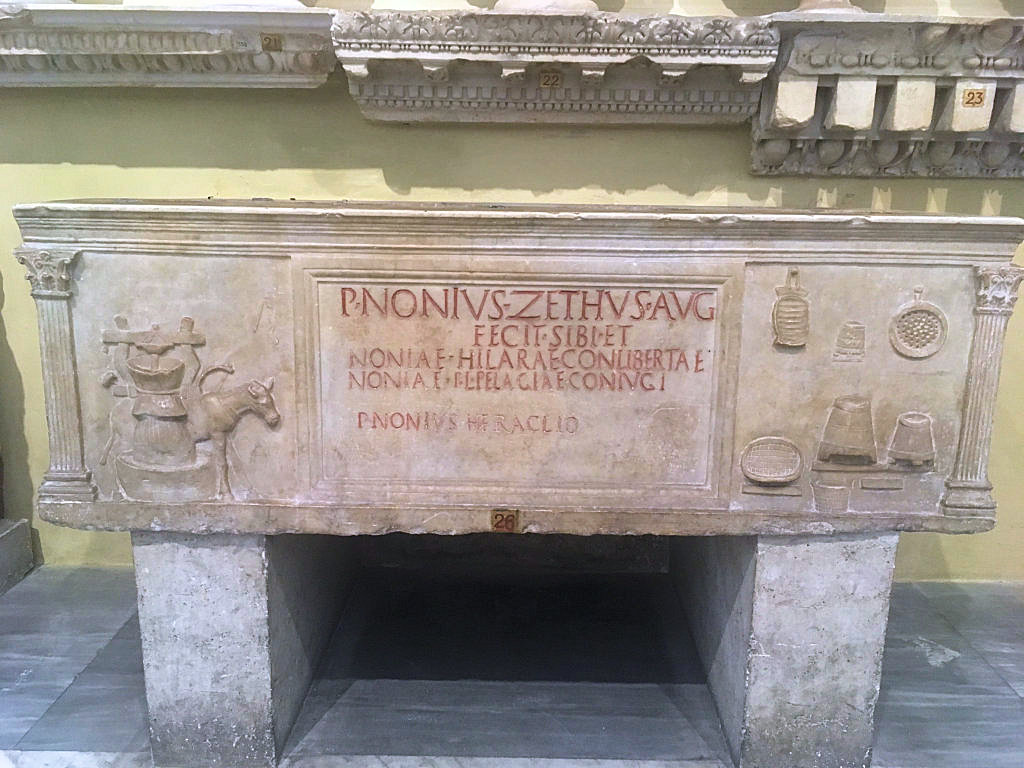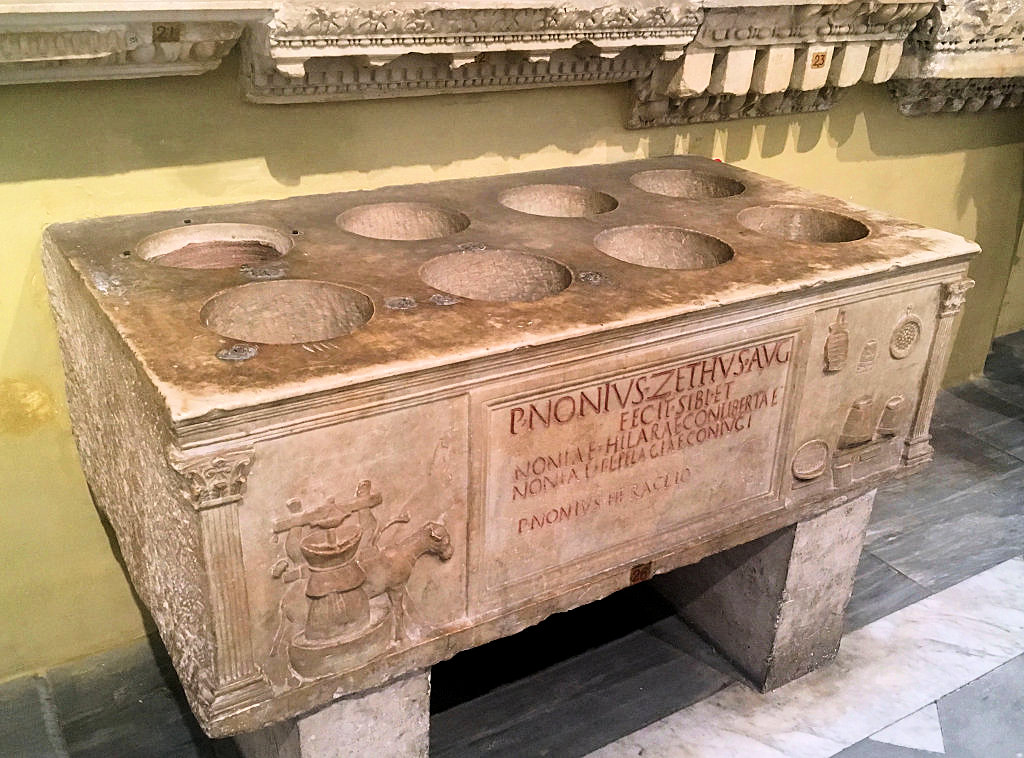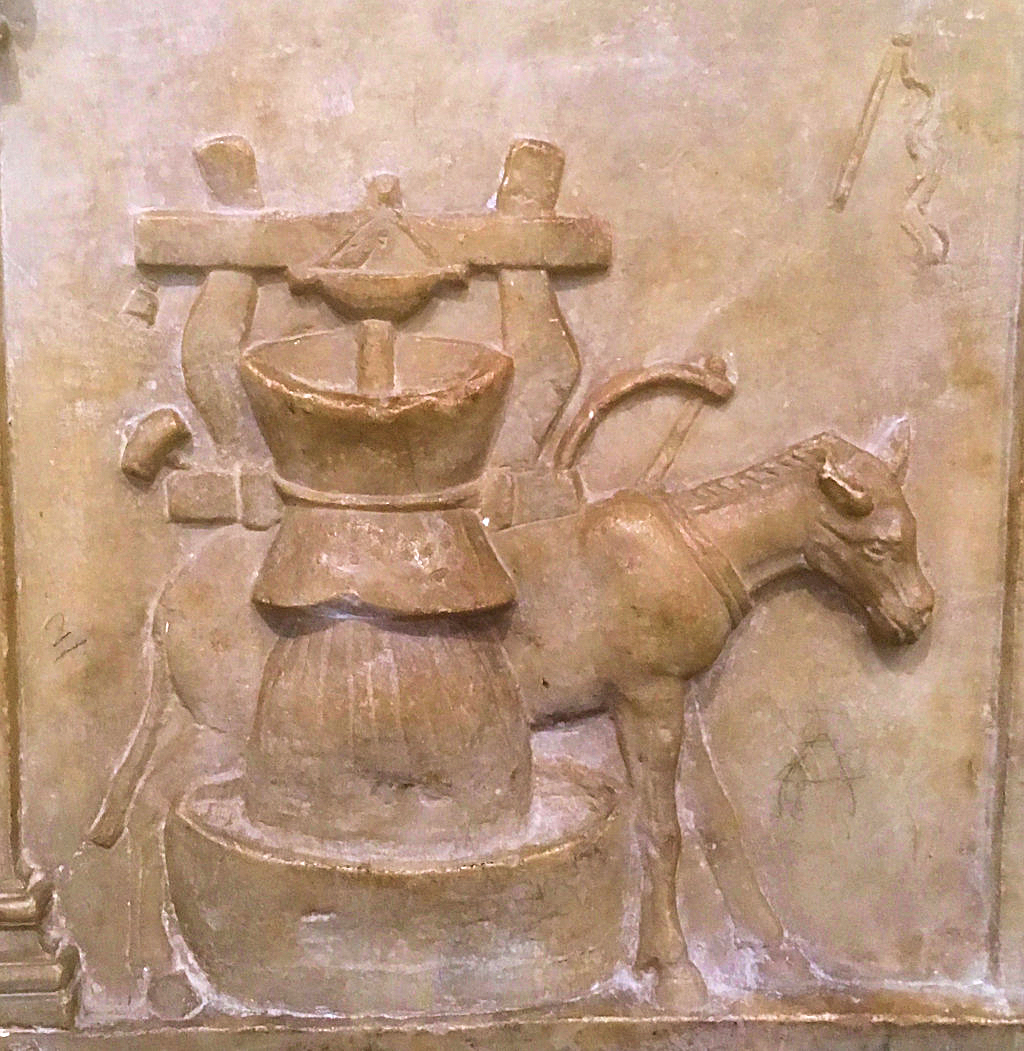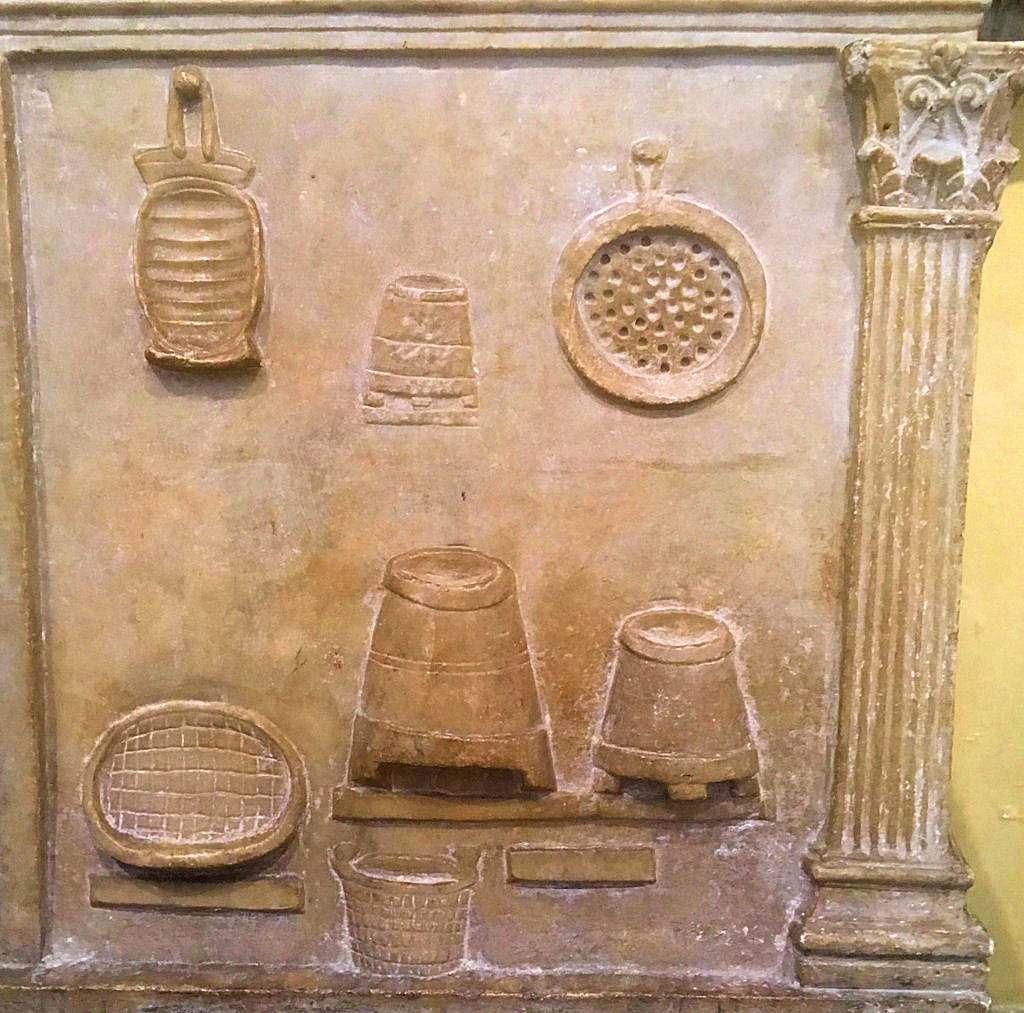Ollarium of Publius Nonius Zethus
From Ostia. Known in 1843.
Date: 150-250 AD. W. 1.365, h. 0.45, d. 0.755.
Depictions from an Ostian bakery can be seen on a so-called ollarium. It was found in Ostia, but the precise date and place of discovery are unknown). According to the inscription on the front it was ordered by Publius Nonius Zethus, an Augustalis, so involved in the Imperial cult. He made it for himself, his fellow-freed slave Nonia Hilara and his wife Nonia Pelagia (perhaps his second wife, which he married after the death of Hilara). The name Publius Nonius Heraclio was added later.
|
P(ublius) NONIVS ZETHVS AVG(ustalis) FECIT SIBI ET NONIAE HILARAE CONLIBERTAE NONIAE P(ubli) L(ibertae) PELAGIAE CONIVGI P(ublius) NONIVS HERACLIO |
Publius Nonius Zethus, Augustalis, made this for himself and for Nonia Hilara, fellow-freed slave, for Nonia, freedwoman of Publius, Pelagia, his wife. Publius Nonius Heraclio. |

The ollarium is a marble block in which eight urns (ollae) could be inserted. Next to the cavities are Roman numerals.


To the left of the inscription an ass or donkey is turning a millstone. Over the millstone is a wooden contraption to which the animal was attached. In the center is a hopper through which grain was led into the millstone. To the left side a hammer and a bell are attached. The bell started ringing when the hopper was empty. The flour fell in a wooden basket or masonry bowl around the lower part. In the upper right part is a whip.

To the right are several objects that were used in a bakery: at the top perhaps a bread-mould, a grain measure, and a sieve, at the bottom two baskets, two grain measures, and perhaps two leveling sticks to be used with the grain measures.

Inv. nr. 1343. Amelung I.4, p. 778-779 nr. 685. CIL XIV, 393. EDR143568. EDCS-05700393. Arachne 20380. Photos: Mary-Jane Cuyler.